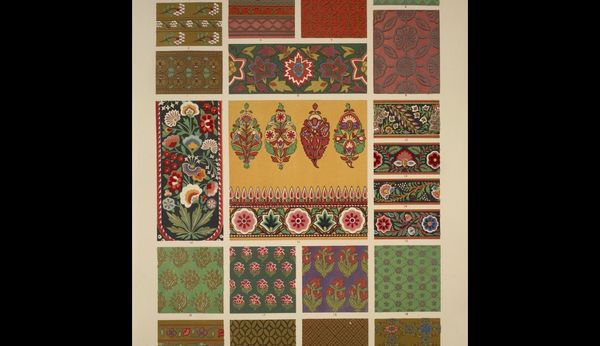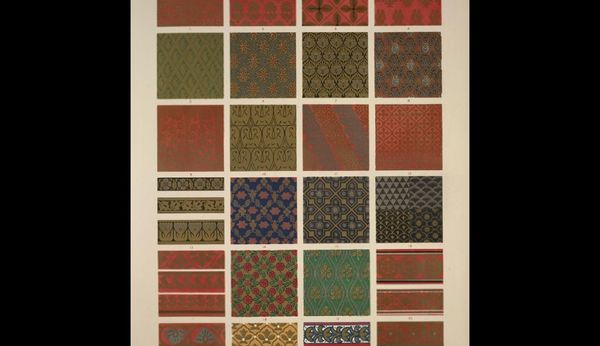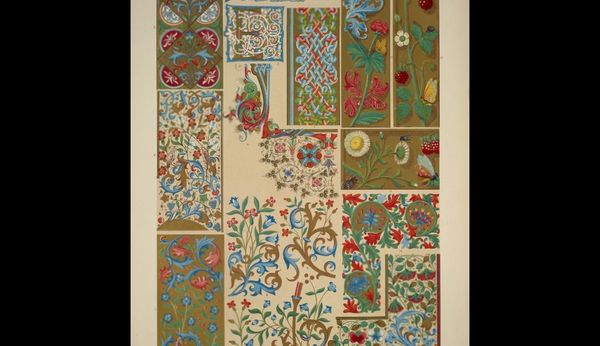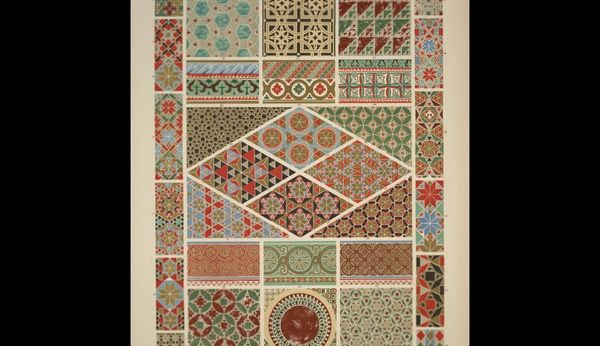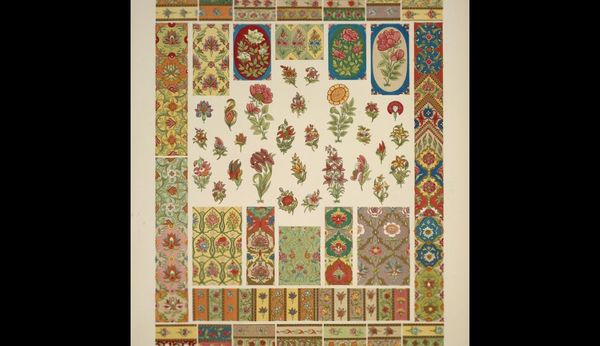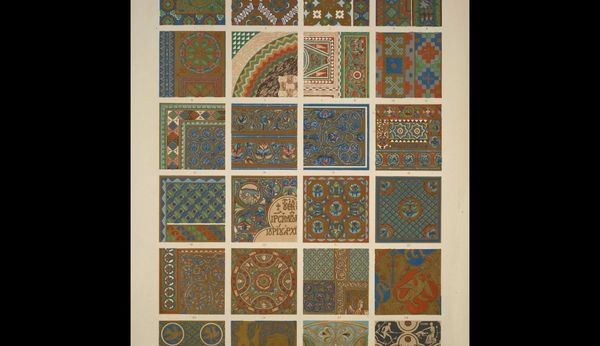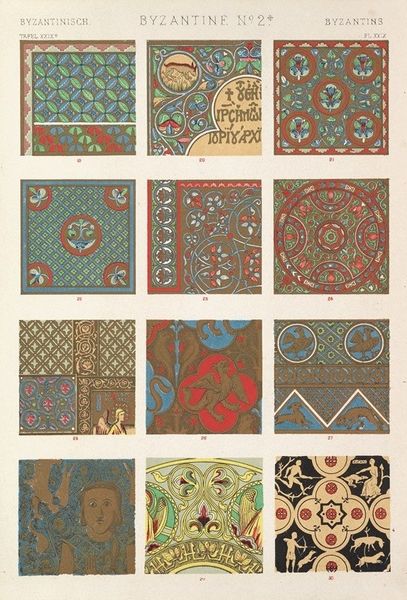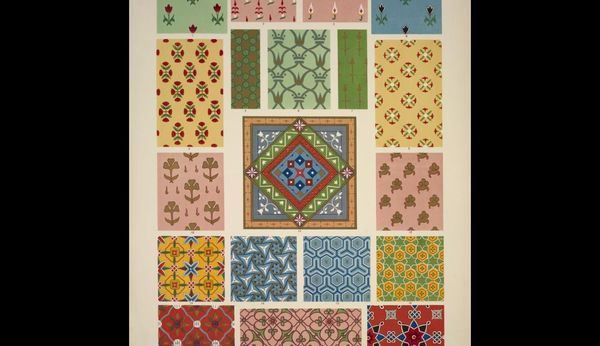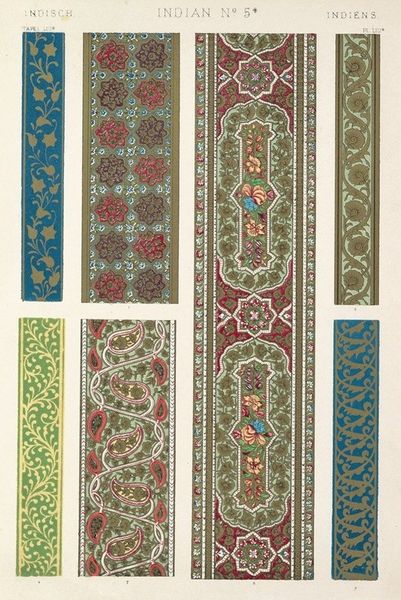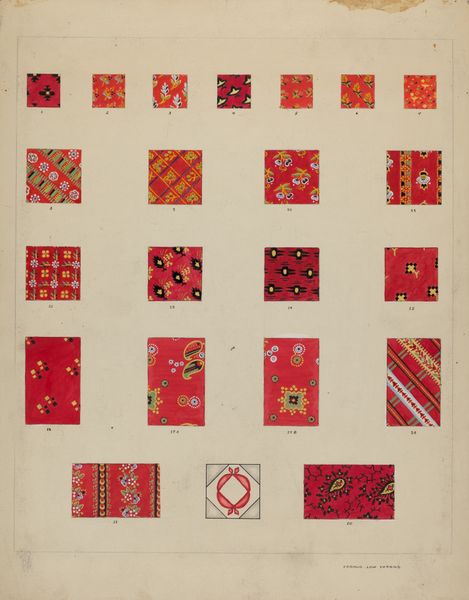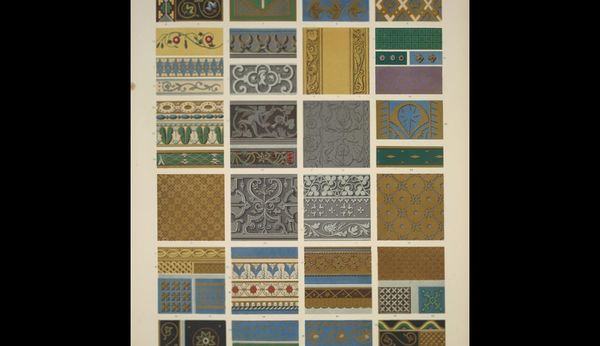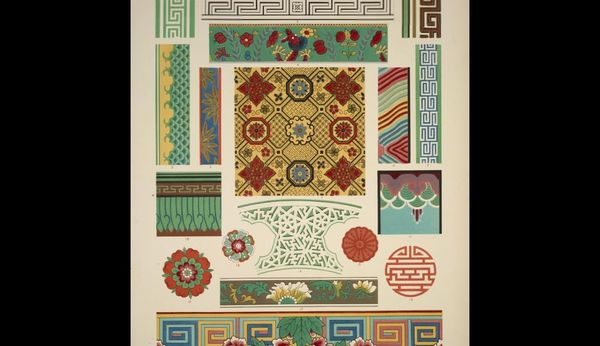
Indian Ornament no. 2. Ornaments from woven fabrics and paintings on vases exhibited in the Indian Collection, now at Marlborough House
0:00
0:00
drawing, graphic-art, ornament, textile
#
pattern heavy
#
drawing
#
graphic-art
#
natural stone pattern
#
ornament
#
pattern
#
asian-art
#
textile
#
text
#
geometric pattern
#
abstract pattern
#
rectangle
#
organic pattern
#
repetition of pattern
#
vertical pattern
#
line
#
pattern repetition
#
layered pattern
#
combined pattern
Copyright: Public domain
Editor: We're looking at "Indian Ornament no. 2" by Owen Jones. It appears to be a drawing featuring various patterns, perhaps intended for textiles. There's something really intricate and mesmerizing about the level of detail. What stands out to you? Curator: What immediately strikes me is the potential embedded power dynamic. Jones, a Western designer, cataloging and presenting "Indian Ornaments" for a European audience. How might the act of selecting, arranging, and labeling these patterns reinforce a colonial gaze, reducing a diverse cultural heritage to a set of aesthetic motifs for consumption? Editor: That’s an interesting perspective. I was just appreciating the patterns. I hadn’t considered the… implications. So, even something seemingly decorative can have those kinds of undertones? Curator: Absolutely. The historical context is crucial. Consider the period: the height of British colonial power in India. To what extent does this work reflect—or perhaps, subtly endorse—the appropriation of cultural elements within a system of domination? Are we admiring cultural exchange, or witnessing a visual manifestation of imperial ideology? Editor: It makes you wonder about the original context of these patterns too. Were they religious symbols? Signifiers of status? Curator: Exactly. And what happens when those meanings are stripped away and they're simply presented as “ornaments?” It begs the question, who benefits from this kind of presentation and what narratives are being unintentionally amplified? Editor: I never thought I would be interrogating the ethics of wallpaper designs. Thank you. I have to rethink my understanding now. Curator: Art invites us to ask difficult questions and see beyond the surface. Looking closer, who might consider this "ornament" and for what purpose?
Comments
No comments
Be the first to comment and join the conversation on the ultimate creative platform.
